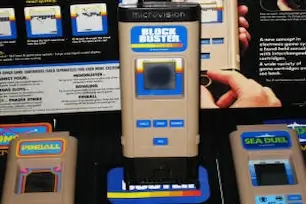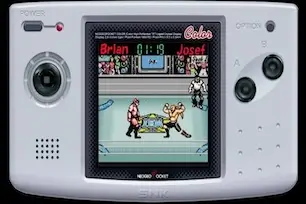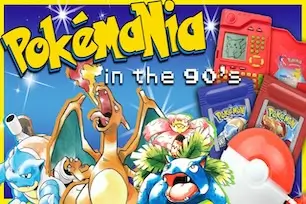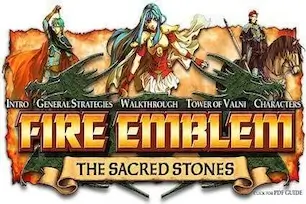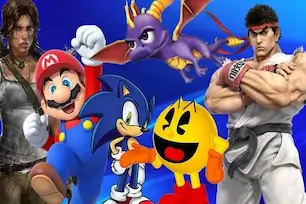Key takeaways from this Article:
✅ Popularity: The 90s saw the start of popular handheld gaming devices. The Nintendo Game Boy and Game Boy Color became very well-known. Their huge game libraries and clever designs helped them stand out.
✅ There are many different handheld gaming devices. Some examples are the Sega Game Gear, Neo Geo Pocket Color, and Atari Lynx. Each of these retro handheld consoles has its own unique features. However, they had trouble competing with Nintendo.This was often because of timing, pricing, and marketing problems.
✅ Legacy of Innovation: Despite their challenges, these portable gaming systems played a big role in shaping today's handheld consoles. Their nostalgic charm and lasting influence still connect with players in today's gaming world.
The Table of Contents
Golden Era of 90s Handheld Game Consoles: A Look Back
The 90s were a golden era for gaming, especially in the realm of handheld gaming devices. These portable video game systems revolutionized the way we played, allowing gamers to enjoy their favorite titles anywhere.
The Nintendo Game Boy and the Atari Lynx were important handheld consoles from the 90s. Each one made a big impact and gave players many great memories.
As we look back, nostalgia runs deep with these old portable game systems, making them cherished relics of our childhood. This article looks at the most famous handheld gaming devices from the 90s. It explores their key features, sales numbers, and cultural influence.
Before the Game Boy, other handhelds paved the way — see our guide here.
Which one ranks, pound for pound, as the best video game console?
Below, we look in-depth at the history and stats of all best handheld video game consoles. Explore with us as we examine which portable gaming consoles stand out as the top handheld game systems of the decade.
The Rise of Handheld Consoles in the 90s
Nintendo's Original Game Boy (1989)
While it is not classified as a handheld game console, the Game Boy was the first to become a global sensation. Also, the Game Boy is actually an 80s game console since it was released in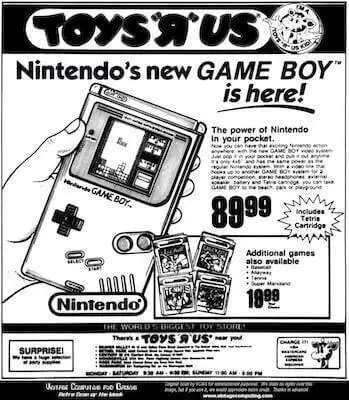 1989 in Japan and the US. However, because Europe didn't get it until 1990, we're on solid legal ground to call it a 90s handheld system.
1989 in Japan and the US. However, because Europe didn't get it until 1990, we're on solid legal ground to call it a 90s handheld system.
It's not hard to see why the console was so popular. Basically, it did absolutely everything right.
Why the GameBoy was a Success?
- Affordable (retailing for $90 upon release)
- Lightweight (it weighed just under 14 ounces with batteries)
- AC adapter compatible
Perhaps even more important is the fact that the Nintendo Game Boy was originally bundled with Tetris. Tetris, along with other popular video games, helped make the game boy very successful.
Also, there was no learning curve when it came to playability. After all, the Game Boy had the same button layout as the already familiar NES controller.
Why the GameBoy was Handheld Gaming's Most Iconic Success
-
Even with its 8-bit graphics and dark, black-and-white screen, the original Game Boy console sold millions of units around the world. Of course, there were subsequent Game Boy models as well.
-
Even the Game Boy Pocket and Game Boy Color never matched the popularity of the original. Nintendo chose to wait until 1998 to release the Game Boy Color because the original Game Boy was still selling well.
-
Altogether, Nintendosold 118 million Game Boy systems. (This includes all variations of the system released prior to the Game Boy Advance.)
Game Boy Color (1998)
The Game Boy Color, released in 1998, marked a significant advancement in the evolution of portable gaming systems, building on the solid foundation laid by the original Game Boy.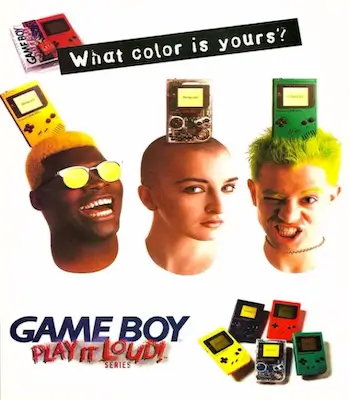
As someone who has witnessed the growth of the gaming industry since the late 80s, I can attest to the profound impact this device had on a generation of gamers.
The Game Boy Color was more than just a small upgrade;
- it was an important time in the history of handheld gaming. Nintendo's official reports state that the Game Boy Color sold more than 30 million units worldwide (Here is GameBoy Historical Sales Data Graph from VG Chartz).
- This shows how popular it was with gamers. This number shows that it is one of the best-selling portable gaming systems ever. It helps to strengthen Nintendo's leading position in the market.
- The backward compatibility feature was very important. It let users play their old Game Boy cartridges with new games made for the Game Boy Color. This kept loyal customers happy and brought in new gamers who wanted to try more games.
- Industry analysts have noted that this strategic decision was vital in keeping the original Game Boy's legacy alive while introducing cutting-edge technology that improved graphics and gameplay.
The Game Boy Color had a great selection of games, including popular titles like Pokémon Crystal, Zelda: Oracle of Seasons, Super Mario Deluxe, Donkey Kong and many more.
Big Publications Took Notice of the GameBoy Color:
- This diverse array of titles showcased the system's capabilities and highlighted Nintendo's commitment to quality gaming experiences.
- Game reviewers from well-known sites like IGN and GameFAQ both praised the Game Boy Color. They highlighted its smart design and easy-to-use interface. This praise helped build a strong positive reputation for the device.
- As a dedicated gamer who has spent a lot of time on portable games, I can say that the Game Boy Color is important to many people.
- Its influence reached far beyond its production years, inspiring the design and functionality of future portable gaming consoles. This legacy continues today with modern devices like the Nintendo Switch, which offer new and exciting gaming experiences.
So What Happened to the GameBoy Color?
- Even though the Game Boy Color was successful, it had a good run for 5 years.
- However, it was eventually overshadowed by the launch of Nintendo's 32-bit Game Boy Advance in 2001.
- The Game Boy Advance offered better graphics and sound.
This improved gaming experience showed a shift to a new kind of handheld gaming system.
Sega Game Gear (1990)
In 1990, Sega released the Game Gear handheld system, the first true contender to the Game Boy. And what a contender it was, with much to boast about against its competition.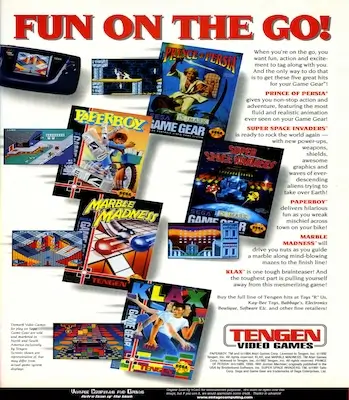
- Like the Lynx, the console featured games in full color, as well as a backlit screen. But unlike the Lynx, the Game Gear featured a reasonable launch price.
- At $149 dollars ($40 cheaper than the Lynx), the Game Gear was a Christmas present that plenty of parents could still afford.
- Even better, most of the popular third-party games that were ported to Game Boy were also ported to Game Gear. And let's be honest: who wants to play Mortal Kombat in black-and-white when they can play it in color?
- Gamers can enjoy mobile versions of well-known Sega games, such as Sonic the Hedgehog 2. There was also a device that allowed you to watch TV on your Game Gear, which was probably useful for camping trips.
So What Happened to Sega Game Gear?
The Game Gear had so much going for it. So why did it only sell 10 million units?
- Primarily, the constant challenge of "why Sega failed" can be attributed to issues like bad timing and unfortunate circumstances. When the Game Gear launched, the Game Boy had already dominated the market for more than a year.
- Not only that, but the 8-bit system was also competing with 16-bit home consoles, like Sega's own Genesis console. Players had already grown accustomed to 16-bit Genesis graphics for almost 2 years when the Game Gear came out.
- Aside from that, the system was also plagued with poor battery life. But this could be solved using an AC or car adapter.
Still, the Game Gear was ultimately a superior system that never saw the popularity it deserved.
Neo Geo Pocket and Neo Geo Pocket Color (Released 1998 by SNK)
- In 1998, SNK introduced the Neo Geo Pocket, a handheld gaming device. It faced tough competition when it launched alongside the Nintendo Game Boy Color.
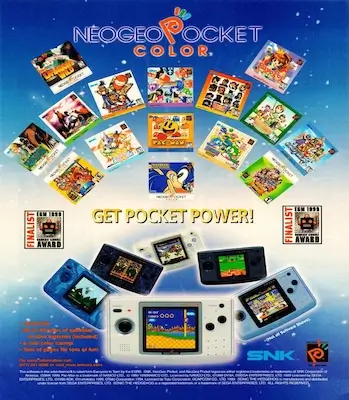
- The original Neo Geo Pocket had a black-and-white screen. It had a hard time gaining attention because it was released at the wrong time.
- As a result, it sold only about 2 million units, even though it had a good selection of games and some unique features.
- Following this, SNK launched the Neo Geo Pocket Color later that year. It featured a bright full-color screen that attracted gamers wanting a better visual experience in handheld gaming.
The Neo Geo Pocket Color has a solid lineup of well-known games, especially in the fighting category. It includes titles like 'King of Fighters R-1' and 'Metal Slug: 1st Mission.' These are some of the best Neo Geo Pocket games that attract players of all ages.
So What Happened to the Neo Geo Pocket?:
- However, the Neo Geo Pocket Color faced stiff competition from the Nintendo Game Boy Color.
- Even with a loyal fanbase and about 2 million units sold, it had a hard time gaining a strong position in the tough market of portable gaming.
Today, the Neo Geo Pocket and its successor, the Neo Geo Pocket Color, are valued by retro gaming fans. This explains how timing and market conditions were important in the development of handheld gaming consoles.
Atari Lynx (1989)
- The Atari Lynx went was released to challenge Nintendo's Game Boy in 1989. And the smart money said that this was the best handheld retro gaming console to own.
- After all, it boasted the
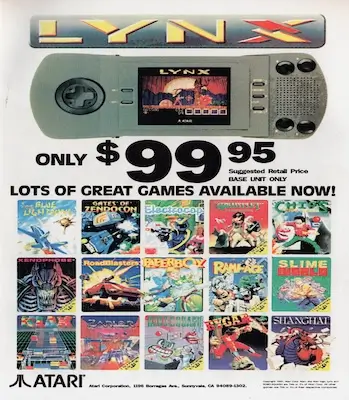 first color/backlit LCD display of any video game console up to that point. Amazingly, it also had the ability to network with other units.
first color/backlit LCD display of any video game console up to that point. Amazingly, it also had the ability to network with other units.
- The Lynx had a large collection of good arcade game ports. Its graphics were better than 8-bit and created a fake 3D look by expanding and shrinking images.
So What Happened to the Atari Lynx?
- But all those slick features came at a price, namely, shorter battery life.
- The Game Boy could run for about 35 hours on four AA batteries. In comparison, the Lynx only provided 4 to 5 hours of playtime with six AA batteries.
- On top of that, this state-of-the-art 90s system cost a pretty penny. Retailing for $179.99, the Lynx was too cost-prohibitive for most everyday folks.
- In the end, the Lynx made some decent profits. But over the course of its life, it only sold some 2 million units, a pitiful fraction of the Game Boy's sales.
Sega Nomad (1995)
Sega released the Nomad, which was a mini, portable version of the Genesis, in 1995. Despite its undeniable awesomeness, it was a complete failure that quickly faded into obscurity.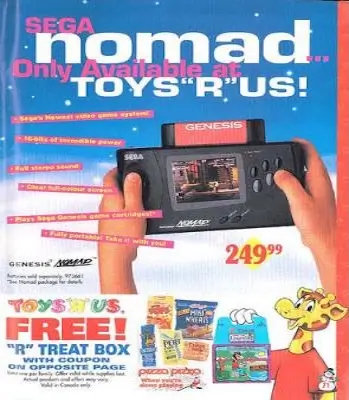
- One reason for this is the Sega Saturn, which was outselling the PlayStation at the time.
- Sega focused so much marketing energy on the Saturn that they barely promoted their awesome new handheld console.
- The Nomad could play Sega Genesis games, but it didn't work with some add-ons like the Sega CD. This made it less appealing to some players.
What Happened to the Sega Nomad?
The Sega Nomad had a hard time competing in a crowded market with many good home consoles and handheld devices.
- As people focused more on the Sega Saturn and other new gaming systems, the Nomad got little marketing help. This resulted in few consumers knowing about it.
- Its incompatibility with certain Sega add-ons also hindered its adoption among loyal Sega fans.
- Ultimately, the combination of insufficient promotion and limited compatibility resulted in the Nomad's underwhelming sales performance, with only 1 million units sold.
The Nomad became a relic of gaming history, often remembered for its innovative concept rather than its commercial success.
TurboExpress (Released 1990 by NEC Home Electronics)
Released in 1990, the NEC TurboExpress aimed to compete with Nintendo's handheld gaming dominance. This device featured a full-color LCD screen, providing a better visual experience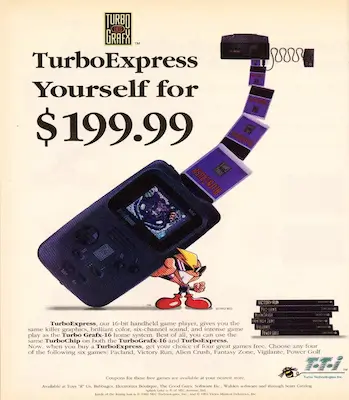 than many other handheld gaming consoles of that time.
than many other handheld gaming consoles of that time.
- The TurboExpress came with a TV tuner accessory.
- This feature let users watch television while they were on the move. It was a new idea for portable gaming devices at the time. One of its main features was that it could play TurboGrafx-16 cartridges.
- This allowed gamers to experience classic games on the go for the first time.
- Despite these impressive features, the TurboExpress faced significant challenges, including its high price of $249.99 and limited battery life, which hindered its success in the handheld gaming market.
Ultimately, while it represented a remarkable advancement in portable video game systems and contributed to the evolution of gaming handhelds, it struggled to find a place among the more popular handheld consoles of the 90s.
So What Happened to the TurboExpress?
But once again, these cutting-edge features came at too high a price---$249.99, to be precise. And in 1990, that was a huge chunk of change. So was the TurboExpress worth it? Did the public lap it up, price tag be damned?
- No, not at all. Regardless of the price, it had a lot going against it.
- First, since this handheld was basically a reduced-size TurboGrafx processor, it was quite bulky.
- The TurboExpress weighed in at around two pounds, making it the chubbiest of handheld game consoles. It also sucked up battery juice like it was getting paid to do it, killing 6 brand-new AAs in less than 2 hours.
- As if this wasn't enough, its stock capacitors were cheap and often resulted in sound issues or console death. Combine this with the pixel problems of the finicky LCD screen, and you had a machine that never got its big break. Total units sold: 1.5 million.
Tiger Game.com (1997, Tiger Electronics)
Tiger's Game.com was the first handheld console that offered touchscreen capabilities. That may not seem so impressive today. But in 1997, when the Game.com was released, this was a huge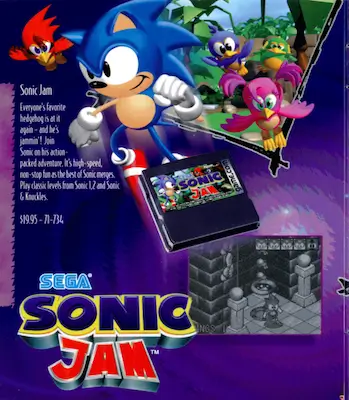 leap forward for handheld electronics.
leap forward for handheld electronics.
- In fact, it marked the dawn of the Palm Pilot revolution. The Game.com even came with its own stylus, which players used to control the action on-screen.
- On top of all this, it had online capabilities via a modem port in the back. Thus, it was also the first handheld gaming device with Internet connectivity.
- Although none of the games used this feature, Game.com users could send and receive emails and browse the web using a text-only browser.
So What Happened to the Game.com?
- But while many of the Game.com's features were ahead of their time, the rest were staggeringly outdated.
- Namely, its black-and-white, non-backlit screen was no more advanced than the original Game Boy, which came out 8 years prior. While this lowered the initial price to $70, it was a deal-breaking turn-off to most gamers.
- The system had an incredibly low frame rate, which led to ghosting in many games. "Ghosting is a visual issue that happens on screens. It creates a trail or shadow of a moving object, making it look blurry or smeared."
- Tiger tried to fix these problems with the Game.com Pocket Pro, which came out a few years later. But the gaming public had already spoken: "Thanks, but no, thanks." Total units sold: 300,000.
Ranking the Best 90s Handheld Game Consoles?
The Atari Lynx, Sega Nomad, and Neo Geo Pocket provided great entertainment and had unique features. However, they are not as popular as the top winner:
- Nintendo Game Boy (1989): Undoubtedly the best handheld console and a pivotal player in the realm of portable gaming. The Original Game Boy sold more than 40 million units around the world. It has the biggest collection of games, including well-known titles like Metroid II and several old Pokémon games.
- The Game Boy Color, released in 1998, improved handheld gaming with colorful graphics. It could also play games from the original Game Boy. It sold more than 30 million units.
- Sega Game Gear (1990): This significant contender in portable gaming sold approximately 10 million units. The Game Gear had a colorful screen and many popular games, making it a good choice for people who loved handheld gaming. It was often compared to the Game Boy.
- Neo Geo Pocket Color (1998):The Neo Geo Pocket Color managed to sell about 2 million units. However, it struggled to gain market share due to timing and competition in the portable gaming landscape.
- Atari Lynx (1989): The Lynx sold around 2 million units. However, its high price and short battery life made it less appealing in the crowded market of handheld gaming devices.
- The Sega Nomad was released in 1995 and sold about 1 million units. However, it became less known because it had limited marketing and had problems with some add-ons.
- TurboExpress (1990): It sold only 1.5 million units due to its high price and bulky design, which deterred potential buyers.
- Tiger Game.com (1997): The Game.com aimed to bring touchscreen technology to handheld gaming but only sold 300,000 units. It had problems with slow performance and old features.
The Nintendo Game Boy is the top choice in portable gaming. It has sold many units and offers a large collection of famous game titles.
Other handheld gaming devices like the Neo Geo Pocket Color and the Sega Game Gear had unique features. They offered enjoyable gaming experiences for players. However, they did not have the same effect on gaming culture as the Game Boy did.
The gameboy's light design, low price, and nostalgic charm make it the most popular handheld console of the 90s. It has a lasting impact that still shapes modern portable game systems today.
There are no iPhone cases designed after the TurboExpress. This shows how important the Game Boy is in the world of handheld gaming.
Conclusion: Why 90s Handheld Consoles Still Matter
Looking back at the golden age of handheld consoles, we see that each device offered special features and experiences for portable gaming. The nostalgia for old portable game systems brings back memories of simpler times. We remember trading game cartridges at school and playing late into the night with our favorite handhelds.
We believe the Nintendo Game Boy is the best in this nostalgic debate. However, we should also recognize the importance of other consoles like the Atari Lynx and Sega Nomad. Each of these classic handheld gaming devices brought something unique. Which one is preferred often depends on personal experiences and fond memories linked to these retro gaming consoles.
You might recall the bright colors of the Lynx or the joy of having a portable Genesis with the Nomad.
Whether you're a die-hard fan of classic handheld consoles like the Atari Lynx, a Sega Nomad enthusiast, or someone who grew up glued to the legendary Nintendo Game Boy, there’s no denying the magic of 90s portable gaming systems. Each device carried its own legacy—some defined an era, while others became cult classics cherished by collectors today.
So, what will your choice be? The iconic Game Boy or one of its worthy competitors from that era? No matter what you like, it’s time to revisit those great memories and enjoy these classic portable game systems again. Gaming is not only about the consoles we use, but also about the great memories we make while playing.
Frequently Asked Questions Regarding 90s Handheld Consoles
Nintendo Portable Game Systems From the 90s
- Game Boy Console (1989)
Game Boy Pocket (1996)
Game Boy Color (1998)
When was the original Game Boy released?
- The original Game Boy console launched in North America on July 31, 1989.
How much did the original Game Boy cost?
- The original Game Boy console debuted in 1989 with a launch price of around $89.99.
Can original Game Boy games be played on the Advance?
- Yes.
What was the first handheld gaming console?
- Microvision: Was yhe first handheld console to utilize interchangeable cartridges.
About Us: Welcome to The Old School Game Vault: Where Nostalgia Meets Value
If you're looking to sell old gameboy games or other vintage video games, The Old School Game Vault is your go-to destination. Our platform lets you sell used Game Boy and Nintendo games easily. We provide fair trade-in values that reflect the real worth of your retro titles.
At The Old School Game Vault, we have been in business for more than 18 years. We have earned a reputation for being trustworthy and reliable in the retro gaming community.
You can sell your Game Boy games and other beloved titles with confidence. Our experienced team will provide you with accurate evaluations and honest trade-in prices. Customer satisfaction is our top priority, and we are here to make your experience seamless and enjoyable.




